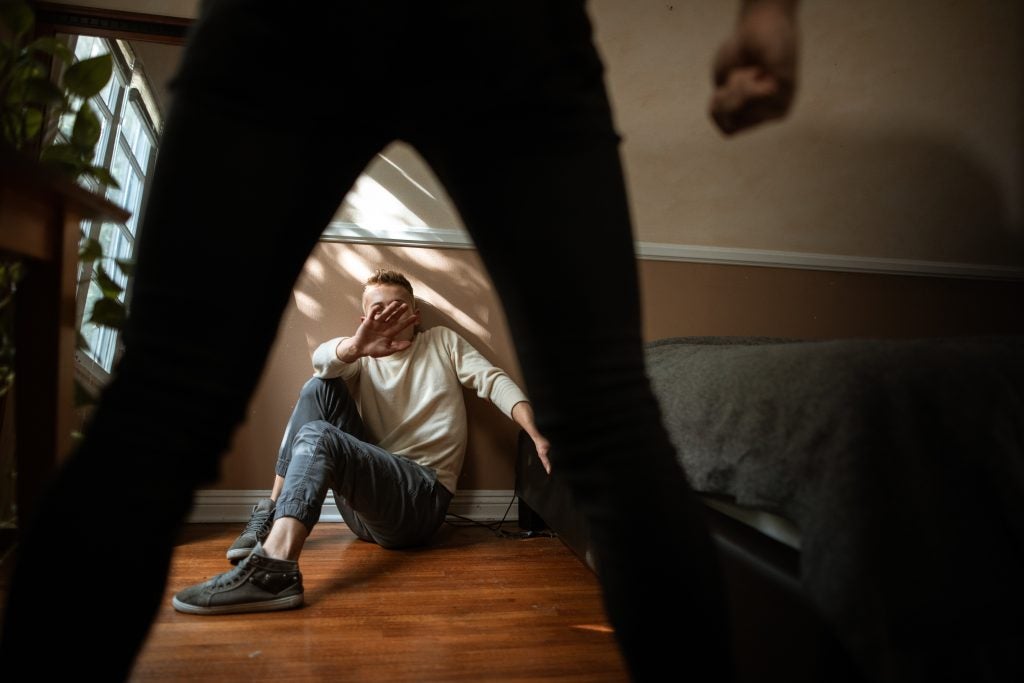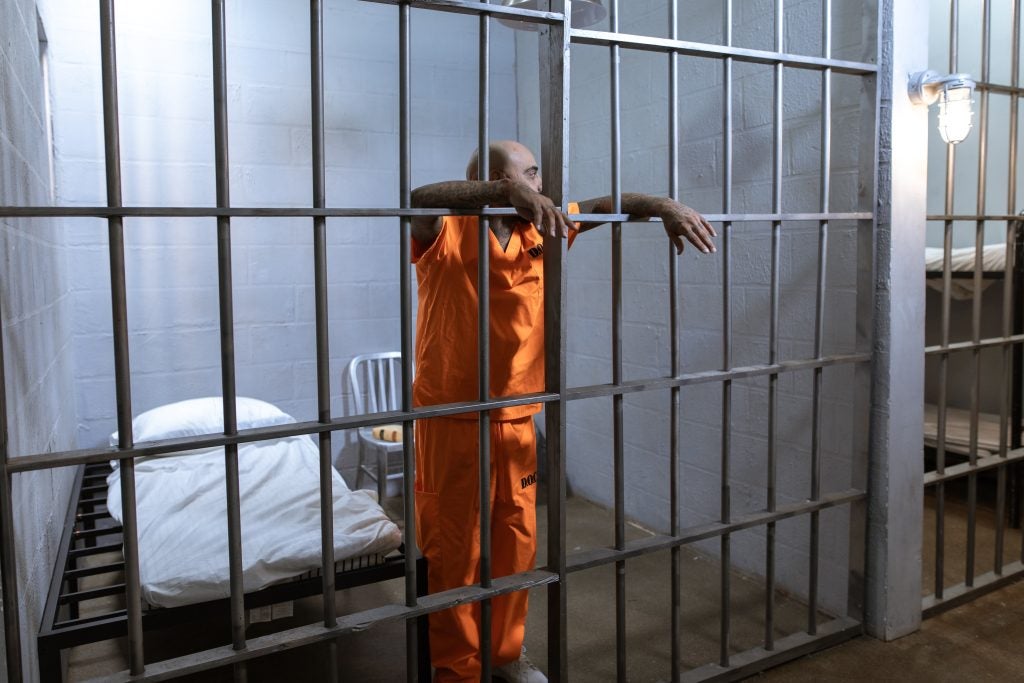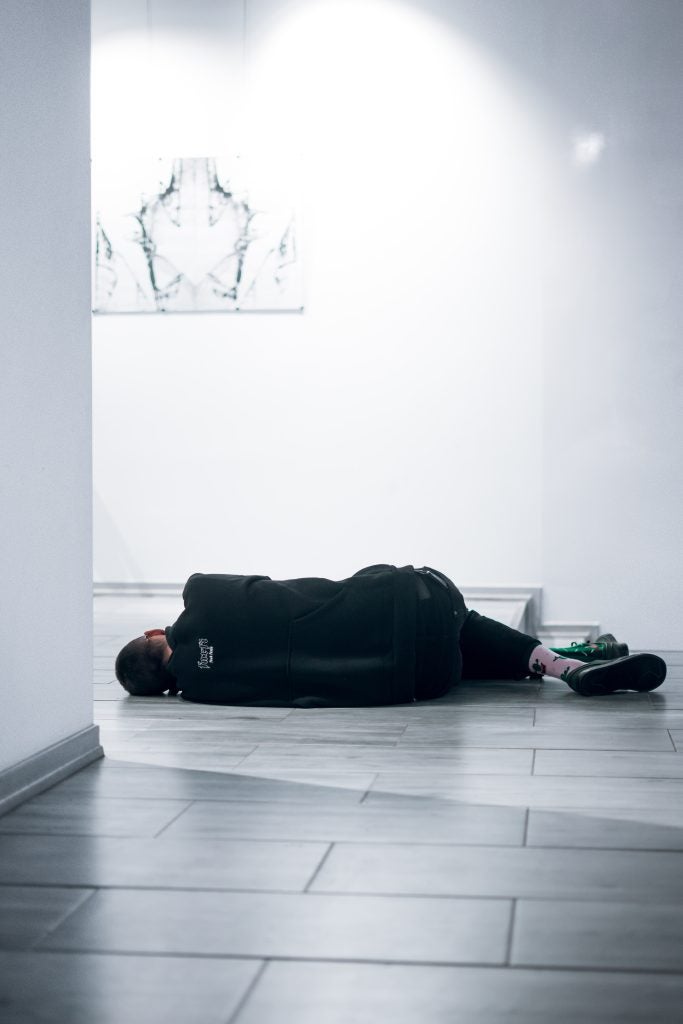Disclaimer: We acknowledge that there are many different words that individuals use to describe themselves after experiencing sexual assault. In this article, we only use the term “survivor” for the sake of consistency. We acknowledge that there are many different ways of processing sexual violence, and we believe each individual should be able to choose the language that they are most comfortable with.

Table of Contents
Defining Male Sexual Assault
Male sexual assault occurs when an individual inappropriately touches a male without their consent, or when a person physically psychologically forces a male to engage in a sexual act with them.1
Furthermore, rape is defined as “nonconsensual penetration of the mouth, anus, or vagina by any body part or sex organ of another person; or by use of foreign object.” Sexual contact is also illegal if inflicted upon a person who is incapable of giving consent because of age, physical incapacity, or mental incapacity. Oftentimes, the perpetrator of sexual assault might be a friend, romantic partner, or family member—in fact, about two thirds of survivors know their attacker, and few attacks are perpetuated by complete strangers. Regardless of relation, unwanted sexual contact is unacceptable and unlawful, whether the survivor is male or female.2
Facts and Figures
The best way to understand the prevalence of male sexual assault is to read papers published by research centers, look at large collections of data, and stay up to date with the latest academic consensus. Some statistics about male sexual assault in the U.S. and Canada are as follows:
- According to the Association of Alberta Sexual Assault Services, a collective amount of research has stated that 10 to 20 percent of males will experience some form of sexual assault in their lifetimes. Statistically, this translates to thousands of Canadian men who experience sexual assault every year.
- A 2005 study conducted by the U.S. Centers for Disease Control found that 16% of all males were sexually abused by the age of 18.
- A 2003 study reported that 14.2% of all males were sexually abused before the age of 18.3
- According to data collected by the director of Crimes Against Child Research Center, 1 in 20 boys is a victim of childhood sex abuse.4
- According to a 2013 National Crime Victimization Survey on 40,000 households about rape and sexual violence in the U.S., it was uncovered that 38% of such incidents were committed against men.
It is clear that a significant amount of males experience sexual assault at some point in their lifetimes, and that this problem should be acknowledged and addressed by legislators, law enforcers, activists, health professionals, counselors, social workers, in addition to the general public.
Male Sexual Assault in Context
Males can be sexually assaulted by anyone, regardless of their perpetrator’s gender identity, sexual orientation, age, or relationship to the survivor.
Male sexual assault can occur in many different settings, be it a private residence, a public space, at school, or the workplace; however, there are some areas where male sexual assault is becoming increasingly prevalent, such as the military and correctional facilities.
The Military
Sexual assault is a prevalent issue that affects both males and females in the armed forces. According to the Department of Defense (DOD) Annual Report on Sexual Assault in the Military, it is estimated that approximately 6,300 men experienced sexual assault in 2016. More data from the DOD showed that 27% of men characterized their sexual assault as a form of hazing, and 39% characterized their sexual assault as a form of bullying.
Although male rape is prevalent in the U.S. military, the topic can be difficult to address due to stereotypes surrounding masculinity. These stereotypes often portray men as strong and unemotional, leading some male survivors to feel they might be rejected if they come forward with their sexual assault story.
The army has recognized the sexual assault men in the military face, and has developed programs to prevent, respond to, and eliminate sexual assault and harassment in their organization. Some of these programs include stimulating more communication and outreach about male sexual assault, increasing the amount of male-focused scenarios in emergency response training for sexual assault, and raising awareness about male sexual assault in the army through discussion and discourse.
The Prison System

Prison can be a physically, mentally, and emotionally violent place to be, and this does not exclude many forms of sexual violence. Unfortunately, sexual victimization—including sexual abuse and nonconsensual sexual acts—is a prevalent issue in many male prisons. Sexual assault in male correctional facilities can also create a public health issue by enabling the spread of sexually transmitted infections (STIs). Sexual victimization can also lead to increased rates of violence, mental health problems, self-harm, and suicidal ideation among male prisoners.
Formerly incarcerated individuals who experienced sexual assault during their time in correctional facilities have enacted lawsuits, thus incentivizing the Human Rights Watch (HRW) to investigate the problem. HRW interviewed over 200 prisoners in 37 states and created a report entitled “No Escape: Male Rape in Prison.” This caused U.S. Congress to pass the Prison Rape Elimination Act (PREA) in 2003, which collected thorough research on the rate of sexual assault in state penitentiaries and formulated interventions for treating incarcerated males who have been affected by sexual assault in correctional facilities. “No Escape: Male Rape in Prison” came to the conclusion that sexual victimization in prison can affect between 1 to 41% of all prisoners. A more conservative estimate has shown that about 2% of all prisoners have experienced sexual assault. Researchers have also found that sexual coercion in prison is far more common than sexual assault and rape. Additionally, male correctional facilities tend to have highe
“No Escape: Male Rape in Prison” came to the conclusion that sexual victimization in prison can affect between 1 to 41% of all prisoners. A more conservative estimate has shown that about 2% of all prisoners have experienced sexual assault. Researchers have also found that sexual coercion in prison is far more common than sexual assault and rape.
Additionally, male correctional facilities tend to have higher rates of sexual assault compared to female facilities. It is apparent that sexual assault of males in correctional facilities is an important issue that many lawmakers and employees in the prison system are beginning to address. Male sexual assault can occur virtually anywhere—be it between partners in a private bedroom, strangers in a public area, or acquaintances at a party—there is an alarming rate of male sexual assault in military and prison institutions, and these issues must be acknowledged and rectified.
Misconceptions about Male Sexual Assault
In most cultures, male sexual assault is not as widely acknowledged or understood as female sexual assault. Males are commonly viewed as perpetrators of sexual assault, not as survivors. In reality, sexual assault can happen to anyone, regardless of age, sex, or gender identity.
There is a common myth that males cannot be sexually assaulted because it is primarily a problem that affects females; however, current data published by research centers dedicated to studying sexual assault shows that males are actually sexually assaulted at a significant rate. Sexual assault is not a crime that solely affects females or males. In fact, anyone can experience sexual assault, and it is imperative to address both sides of the issue instead of concentrating on one.8
Another misconception is that sexual assault does not psychologically affect males as much as it affects females. This myth is built on the principle that males do not have the same level of emotional response as females to traumatizing situations. Sometimes, male survivors who share the stories sexual assault with trusted people are met with indifference, reluctance, and even refusal to help because of these false beliefs. This apathy can make it more difficult for males to access the proper resources after being sexually assaulted. Additionally, many studies have revealed that the long-term impact of experiencing a sexual assault is similarly damaging for both males and females. According to a study conducted by the U.S. Centers for Disease Control, males tend to be inflicted with types of sexual assault more commonly associated with greater psychological harm.8
Finally, there is a myth that assumes that the sexual orientations of male survivors are significantly altered by their sexual assault. Although there are a vast amount of theories regarding how sexual orientation is developed and shaped, most human sexuality experts have determined that sexual abuse does not play a significant role in the formation of an individual’s sexual orientation. Furthermore, some societal standards may dictate that males who experience sexual assault are not “real men” or are stripped of their masculinity. Although it is understandable that males may experience confusion about many things, including their sexual orientation, following an assault, it is important to acknowledge that it is within one’s discretion to decide their sexual orientation, and not that of their assailant.8
Challenges for Male Survivors
Males face a variety of unique challenges as survivors of sexual assault. Social attitudes and norms teach men and boys that they must be masculine, stoic, and strong. There are also many societal standards that frown upon males expressing vulnerability and emotion. Therefore, it is common for male victims of sexual assault and harassment to have trouble coming forward and seeking help for fear of how they will be perceived.
When males finally do seek help from friends, family, and peers, they sometimes face serious discrimination: some will question their story, doubt that the rape even happened, or imply that “men cannot be raped.” This lack of understanding and compassion further complicates the healing process for survivors.

According to the Rape, Abuse, and Incest National Network, there are many challenges male survivors face after sexual assault or rape occurs, including the following:
- Denial that the assault or rape happened
- Questioning of sexuality (especially if the assault was committed by another male)
- Sense of guilt for not being able to stop the assault (especially if the survivor experienced an erection or ejaculation)
- Shame or feeling like “less of a man”
- Regret, depression, and anger
- Post-traumatic stress disorder (PTSD)
- Feelings of fear, paranoia, and anxiety
- Withdrawal from other commitments or relationships
Clearly, male survivors of sexual assault face a unique set of challenges due to societal norms, unhealthy standards about masculinity, lack of support for mental health, and social stigmas
Supporting a Male Survivor
If a male survivor comes forward and shares their sexual assault experience with you, it is important to listen, create a safe space, and avoid passing judgment.
When the male survivor informs you of their assault, believe them. It is incredibly brave for survivors to come forward with their story. If they selected you to confide in, this means that they have a lot of trust in you. It is not your responsibility to investigate the identity, motivations, and details of the occurrence, as this falls under the liability of experts. The male survivor should feel empowered, but not obligated, to seek legal intervention. As a friend or loved one, it is your prerogative to provide support and understanding during these difficult times.
It is also important to not place any judgment or blame on the male survivor. Male survivors may blame themselves for their sexual assault; remind them that their assault was not the responsibility of anybody but the perpetrator.
Many survivors may feel that their self-esteem, confidence, and overall merit as a person has been degraded by their sexual assault. Reminding the male survivor of their worth and value as a human being outside of the sexual assault is another way to show support.
Finally, the most valuable aspects of supporting a male survivor are empathy and validation. Expressing vulnerability and sharing a sexual assault story can be very traumatizing and difficult for male survivors. Validating their feelings about the experience and showing that you care about them as people are all great ways to show support to a male survivor.9
Resources for Male Survivors
There are a multitude of resources for male survivors of sexual assault. They include websites, online communities, hotlines, and the support of family and friends. Some examples of resources are listed below:
- One in Six is a website committed to supporting male survivors of abusive sexual experiences.
- The Gay Men’s Domestic Violence Project is another excellent resource dedicated specifically to gay male survivors of sexual assault and violence.
- The Rape, Abuse and Incest National Network (RAINN) also have a number of resources including an online support line and 24/7 phone line. To speak to a trained support representative, call 800.656.HOPE(4673).
Although it can be difficult to do, seeking help from a friend or family member is a great place to start. Having another person to help a male survivor through the healing process can be incredibly helpful. Although the survivor might feel that nobody will understand what they are going through, and indeed they have endured a traumatizing experience, it is important to know that they are not alone. Males all over the world have felt the same pain and trauma that they are experiencing: it is a global issue and it does not make them any less of a man. Pointing male survivors to the wealth of resources available to them can be one of the best ways to start their road to recovery and healing.
Concluding Remarks
Male sexual assault is oftentimes shrouded in mystery and stigma. Not many people are aware of it being a prevalent issue that affects thousands of men on a yearly basis. Perpetrators of male sexual assault can be of any gender identity, sexual orientation, age, or relationship to the survivor.
Additionally, there are all sorts of misconceptions regarding male sexual assault, such as male sexual assault not being as important as female sexual assault, male survivors not being “real men”, and it being impossible for males to be sexually assaulted. In reality, male sexual assault occurs at a significant rate and impacts approximately one in six men in their lifetimes. Furthermore, male sexual assault in no way relates to masculinity or a person’s status as a “real man.” Males’ experiences with sexual assault are just as valid as those females.
Male survivors also face all sorts of unique challenges after their assault, such as combating societal standards for masculinity, dealing with discrimination against male survivors of sexual assault, and sometimes facing trusted family members and friends who refuse to believe that males can be sexually assaulted. Male survivors also face mental health issues and social problems after their assault including but not limited to anxiety, depression, post-traumatic stress disorder, and withdrawal from personal relationships. It is important to support male survivors by believing their stories, reminding them of their worth and value as a human being, validating their feelings, and expressing care and empathy. Referring male survivors to helpful resources such as websites, online forums, hotlines, and the support of family members and friends can also help them in their healing process. Most importantly, male survivors deserve to be heard and validated. Male sexual assault is a real and prevalent issue that should be more actively addressed, acknowledged, and ameliorated.
References
- “Sexual Assault of Men and Boys.” RAINN | The Nation’s Largest Anti-Sexual Violence Organization, RAINN.
- “Sexual Abuse & Assault of Boys & Men | Confidential Support for Men.” 1in6.
- “Silent No More.” | MaleSurvivor.
- “Crimes Against Children Research Center.” The Criminal Justice System.
- “About National Sexual Assault Online Hotlines.” RAINN | The Nation’s Largest Anti-Sexual Violence Organization, RAINN.
- “Sexual Assault in the Army.” Military Men.
- “Sexual Violence Inside Prisons: Rates of Victimization” US National Library of Medicine, National Institutes of Health
- “Myths and Facts About Male Sexual Abuse and Assault.” 1in6.
- “Tips About Talking to Survivors.” RAINN | The Nation’s Largest Anti-Sexual Violence Organization, RAINN.
Last Updated: 07 February 2019.
